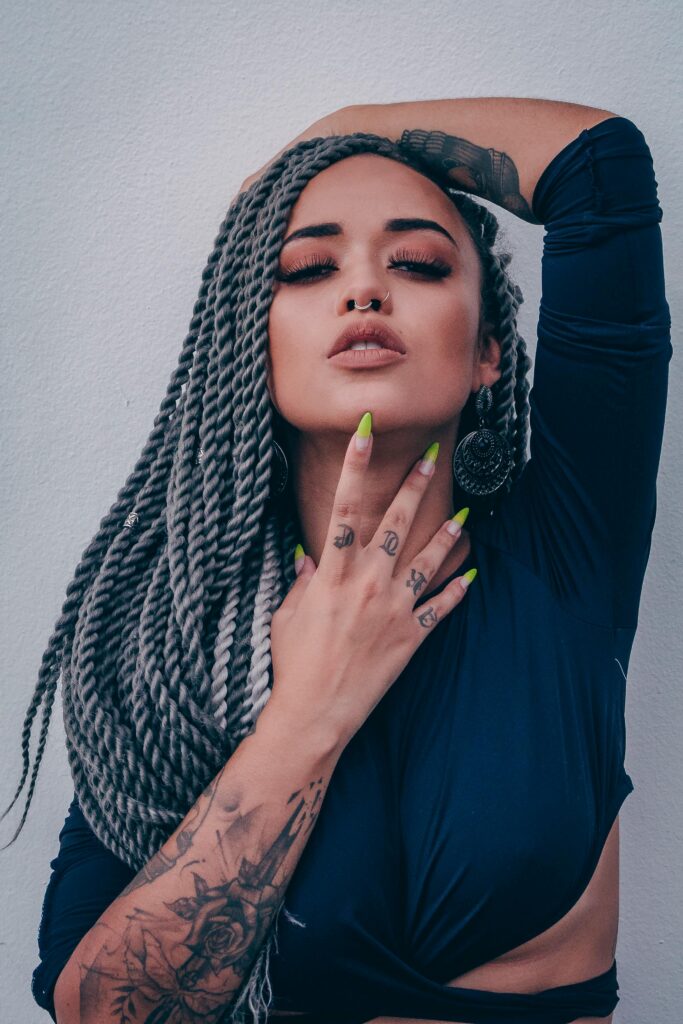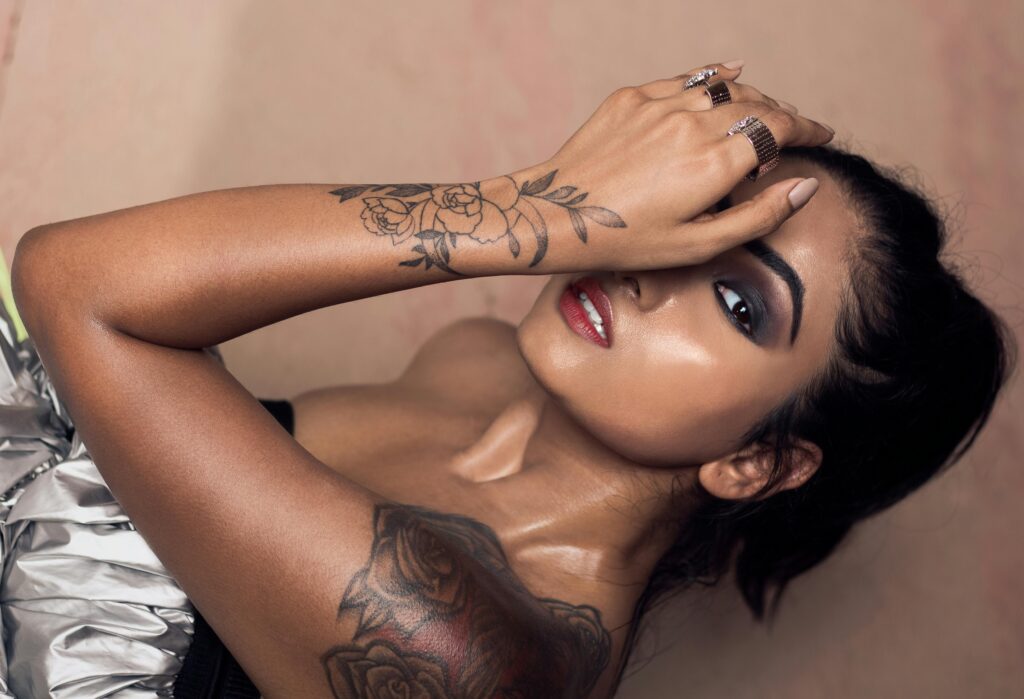The Evolution of Tattoo Art in Australia: A Historical Perspective
Tattoos have long been a canvas for personal expression, rebellion, and cultural significance, and nowhere is this truer than in Australia. Today, tattoos are seen on every corner of the country—from the bustling streets of Sydney to the remote corners of the Outback. But how did tattoo culture in Australia grow into the thriving, multifaceted art form it is today?

To understand the evolution of tattoo art in Australia, it’s essential to dive into its rich history, examine the influence of indigenous cultures, explore the waves of migration, and reflect on how global trends have influenced Australia’s tattoo scene.
So let’s take a journey through time, ink, and artistry as we unravel how tattoos went from cultural markers and rites of passage to one of Australia’s most celebrated forms of personal expression.
Early Beginnings: Indigenous Tattoo Traditions
Australia’s tattoo history stretches back well before European settlers arrived on its shores. For tens of thousands of years, indigenous Australian communities practiced forms of body modification and tattooing that held deep spiritual and cultural significance. These markings were far more than just skin-deep—they were a powerful way of storytelling, passing down traditions, and marking major life events.
Aboriginal tattooing often reflected a person’s connection to their land and ancestry. These tattoos were visual representations of one’s place in the universe, connected to Dreamtime stories and spiritual beliefs. Like the dot paintings we now see in galleries, traditional Aboriginal tattoos employed intricate patterns and symbols, each one loaded with meaning, from maps of the stars to the representation of native animals and spiritual totems.
While traditional tattooing methods used natural tools and pigments, often applied through painful processes, the meaning behind the tattoos outweighed the physical discomfort. They were marks of identity, social status, and spirituality, showcasing that tattooing in Australia began with a deep, sacred foundation.
Convict Ink: Tattoos as Rebellion
When European settlers arrived in Australia in the late 18th century, tattooing took on a different tone. The First Fleet, arriving in 1788, brought with it British convicts, many of whom already bore tattoos. For these convicts, tattoos were less about spirituality and more about rebellion, camaraderie, and defiance against the establishment.
Convict tattoos were often crude by today’s standards, created using rudimentary tools like needles or sharp objects. These tattoos, however, told a story. They frequently featured symbols of resistance, identity, and loyalty. Anchors, hearts, initials, and dates were commonly seen, reflecting the lives and hardships these men and women endured. Tattoos became a visible reminder of their pasts, their crimes, and their solidarity with one another in a harsh penal system.
As Australia’s convict era unfolded, tattoos became a form of marking identity for those who were often stripped of personal freedom and autonomy. Convict tattoos thus symbolized more than just rebellion—they became an act of self-ownership in a society where convicts were seen as mere commodities.
Sailors and Seafarers: The Rise of Maritime Tattoo Culture
Australia’s tattoo culture took a global turn thanks to the sailors who passed through its ports. Sailors, notorious for their affinity for tattoos, brought with them designs and ideas from around the world. By the mid-19th century, maritime tattoos—anchors, ships, swallows, and other nautical imagery—became popular not only among sailors but among Australians who adopted these symbols of adventure and freedom.
Sailors saw tattoos as both lucky charms and personal records of their journeys. Each tattoo carried significance—swallows, for example, were often tattooed after a sailor completed a significant distance at sea, symbolizing safe return. Anchors represented stability, while nautical stars guided them home.
The ports of Sydney and Melbourne became hotspots for tattoo artists, who set up shop in waterfront districts, catering not only to sailors but to the growing number of Australians fascinated by this bold form of body art. The maritime influence during this era introduced a more accessible style of tattooing to the broader population, one that would stick around for generations to come.
The 20th Century: Tattoos and Taboo
As the 20th century rolled in, tattooing in Australia continued to evolve. While sailors and convicts had set the stage, tattoos remained associated with fringe groups for much of the early century. Tattoos were largely viewed as symbols of rebellion and nonconformity, and they were often found on members of biker gangs, criminals, and the working class.
However, tattooing gained increased popularity in military circles during the World Wars. Australian soldiers, much like their counterparts around the world, would get tattoos to commemorate their service. These tattoos often included patriotic symbols like the Australian flag, animals like kangaroos, and reminders of fallen comrades. For these soldiers, tattoos were a badge of honor, marking both the triumphs and losses of war.
During this time, tattoo parlors were often seedy, back-alley operations, hidden from mainstream society due to the stigma associated with the art form. Despite this, tattooing was kept alive by a dedicated subculture of artists and enthusiasts, slowly building a foundation for what was to come in the latter half of the century.
The Rise of the Tattoo Artist: The 1970s and 1980s
Tattooing in Australia took a sharp turn in the 1970s and 1980s, as the art form began shedding its negative connotations and moved into more mainstream circles. This period saw the rise of tattoo artists as true craftsmen, honing their skills in a variety of styles and techniques. The increase in international travel and access to global media meant that Australians were exposed to new tattoo trends from places like America, Japan, and Europe.

In this era, tattoo parlors moved out of the shadows and into more public spaces. Artists began experimenting with intricate designs, focusing on clean lines, shading techniques, and color work. They also started catering to a new breed of clientele—people who saw tattoos not as rebellious markings but as genuine pieces of art.
The tattoo industry in Australia during the 1970s and 80s became more formalized, with artists seeking recognition for their craft and taking their place alongside other creative professions. Tattoo conventions began to pop up, allowing artists from all over the world to showcase their work and exchange techniques. This era marked a pivotal moment when tattoos transitioned from the margins of society into the creative mainstream.
Modern Ink: Tattoos as Art, Expression, and Identity
Fast forward to the 21st century, and tattoos in Australia have truly blossomed into a celebrated form of self-expression and identity. Today, it’s impossible to walk through any Australian city without noticing the diversity of tattoo styles adorning people from all walks of life. From minimalist black line art to elaborate full-body designs, tattoos have become a way for Australians to showcase their individuality, their personal stories, and their connection to culture, art, and heritage.
The evolution of tattoo equipment and techniques has opened the door for detailed, high-quality work that rivals any other art form. Today’s tattoo artists are not just following trends—they’re innovating. Artists in Australia are pushing boundaries, blending styles, and experimenting with new methods, making tattooing as much about creativity as it is about tradition.
Additionally, tattoos have become an inclusive art form. Once stigmatized, tattoos are now embraced across different age groups, genders, and professions. It’s not uncommon to see someone’s grandmother sporting a delicate tattoo or a corporate professional proudly displaying their ink. In today’s Australia, tattoos are no longer confined to the outskirts of society but are a celebrated part of the national cultural fabric.
Tattoo Styles Popular in Australia Today
Australia’s tattoo landscape is a fusion of influences from around the world, and this diversity is reflected in the wide range of styles popular today. Here’s a glimpse at some of the most notable trends:
- Traditional Australian Tattooing: Designs rooted in indigenous art and Aboriginal symbolism remain significant. These tattoos carry a deep respect for the country’s original inhabitants and their spiritual connection to the land.
- Neo-traditional: This style blends classic tattoo motifs like roses, skulls, and animals with modern techniques, resulting in bold, vibrant pieces that remain timeless.
- Realism: The rise of hyper-realistic tattoos has seen artists in Australia push the boundaries of what can be achieved with ink. Portraits, landscapes, and lifelike depictions of animals are incredibly popular, with some pieces looking more like photographs than tattoos.
- Minimalism: Simple, clean lines, geometric shapes, and small, delicate designs have taken off in recent years. For many, these tattoos offer a subtle, elegant way to express identity without the need for large, detailed artwork.
- Custom Tattoos: Increasingly, Australians are opting for custom-designed tattoos that carry personal meaning, whether it’s a tribute to a loved one, a commemoration of a life event, or a reflection of personal philosophy. This trend reflects the growing shift towards tattoos as deeply personal, meaningful expressions of individuality.
Tattoos Down Under: Where Art Meets Storytelling
As tattoos have evolved, so too has the industry that supports it. Today, professional tattoo studios across Australia are known not just for their safety and hygiene standards but for their incredible artistry. One such place is Tattoos Down Under, a studio that takes pride in honoring the long history of tattooing in Australia while also staying at the cutting edge of modern tattoo art.

Whether you’re looking for a traditional Australian design, something completely custom, or simply seeking inspiration for your next tattoo, Tattoos Down Under offers a space where art and storytelling come together. Their talented team understands that every tattoo is a personal journey, one that reflects the individual and their place in the world.
In a country where tattoos have shifted from convict markings to masterpieces of ink, Tattoos Down Under stands as a beacon for all those who want to wear their stories on their skin.


Leave a Reply